I have been in Delhi less than a week and I’m already nursing ‘chai lip’. My lower lip is raw from constantly sipping the scalding brew, so I’m having to slow down my morning imbibition (or find someone who does takeaway!).
Today’s journey treads a now familiar path to Connaught Place in the heart of Delhi. The grassy area at the centre of the three concentric circles is another place Delhiites like to catch up on some zeds and the colonnaded shopping area of the inner circle is a lovely place for a quiet stroll to be alone with your own thoughts and contemplate your navel. (Hallo! What is your good name? How long in India? Your country? This way for shopping! Very good government tourism office. Please come. I not asking any money – you get map for free! Please! Where are you going?). Ah, the serenity…
Moving away from CP, I take the spoke of the wheel called Baba Kharak Singh Marg which will take me to Gurdwara Bangla Sahib, a Sikh temple. Unlike Old Delhi, this part of town has wide boulevard-like streets with lots of foliage, albeit dusty. I can actually see blue pigment in the sky today and there is a light breeze freshening the air. Life is good.
Following the large signposts and the view of large golden domes, I enter the precincts of the temple. It celebrates the site where the 8th Sikh Guru, Harkrishan Dev, stayed when he visited Delhi in 1664.
Shoes deposited and sarong pulled over my head, I pad up the clean white marble steps. The chill emanating from the stones quivers all the way up to my thighs. The temple is busy with devotees coming and going and basically just hanging around socialising. I make my way to the tank. It is quite a sight at about 25 metres square and is approached by walking down steps into a marble courtyard. The water must be of a reasonable quality as there are schools of quoi tumbling over themselves around the edges hoping for some food scraps. It has been a while since I have been near a body of water and the atmosphere is peaceful and reviving. I join everyone else in a perambulation around the perimeter.
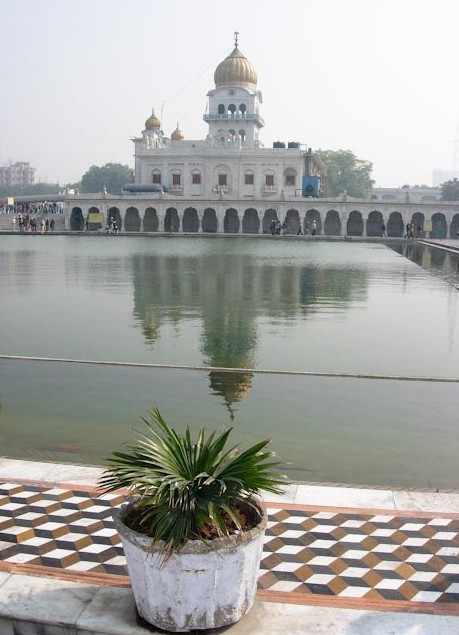
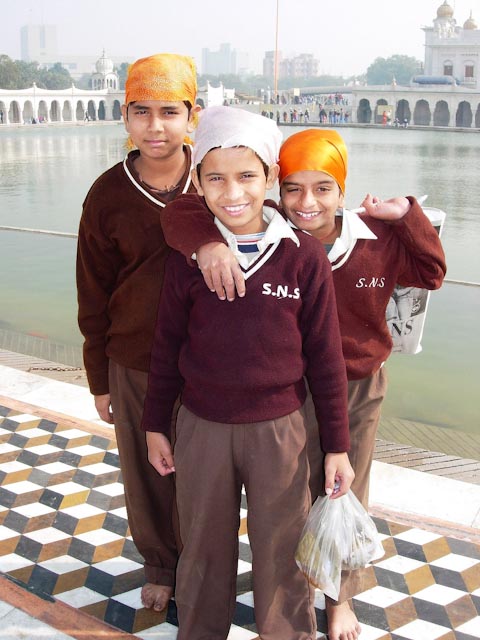
All the while, there has been a background hum of singing and chanting on the loudspeakers. I had assumed it was taped music, but on entering the inner sanctum I see there is a band of sorts. Three venerable old Sikhs to be precise. One on tabla, another on what looks like a cross between a box accordion and a mini piano (a harmonium it turns out), and the other providing the vocals. Surprisingly, it is quite easy to listen to and adds to the soothing surrounds.
I linger as long as I can justify, chatting to a few people as we put on our shoes.
‘Where are you from?’
‘Australia.’
‘Ah, Tasmania?’
Well, that makes a change from Sydney? Melbourne?
‘I have a friend there. You know Judith McLarens?’
‘Ah, no, I’m from Sydney actually.’
After agreeing to take some photos of some jubilant schoolboys with their heads covered with golden scarves, I push on to the main event.
It is about now that Delhi throws me down a rather serious gauntlet. Traffic lights and little green men are not unknown in Delhi, however they are often lacking in seemingly necessary places. This is something I have not come across before, either in Cairo or Beijing, but I am always up for a challenge. It is pretty daunting confronting 7-10 lanes of congested traffic, but crossing it is actually not as hard as it would first appear. The key is patience. You must wait for the right opening, and it will come, in sh’allah. What is then required is that you keep your nerve. DO NOT HESITATE. Vacillators cause accidents for everyone. If your nerve is failing you can always wait for an accumulation of people and cross as a hoard.
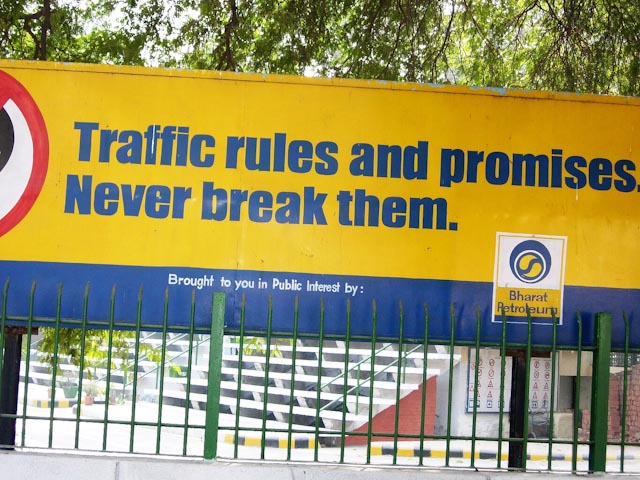

Having crossed the river Styx, I now find myself in the heart of Lutyens’ Delhi. Edwin Lutyens was the architect of much of Delhi’s official landscape. Rajpath (Kingsway) is Delhi’s Champs de Elysees and India Gate at the eastern end is its Arc de Triomph. (I can now confirm having studied this monument, that Indians were indeed at Gallipoli – Ghurkhas fighting in Indian regiments to be strictly correct – as well as many other campaign sites during WWI, despite India not being granted its request of freedom to fight as an independent nation by the British).
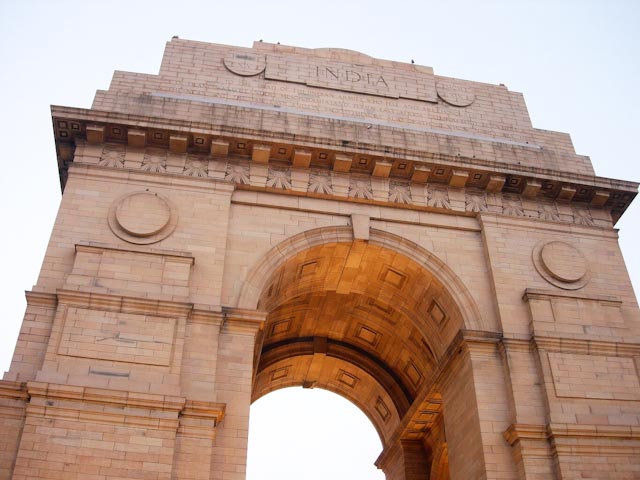
At the other end of Rajpath, more than a kilometre away is the President’s House (originally built for the Viceroy). It is flanked by two impressive secretariat buildings in red stone. The dominant colours of the whole scene are golden yellow and deep pinkish-red terracotta, contrasted with the bright green of surrounding lawns (more Indians lounging around snoozing and playing cards etc). Add the blue sky and you have an impressive scene. In comparison to the rest of Delhi, these buildings seem out-of-proportion portentous, rendering the rest of Delhi dolls’ furniture.
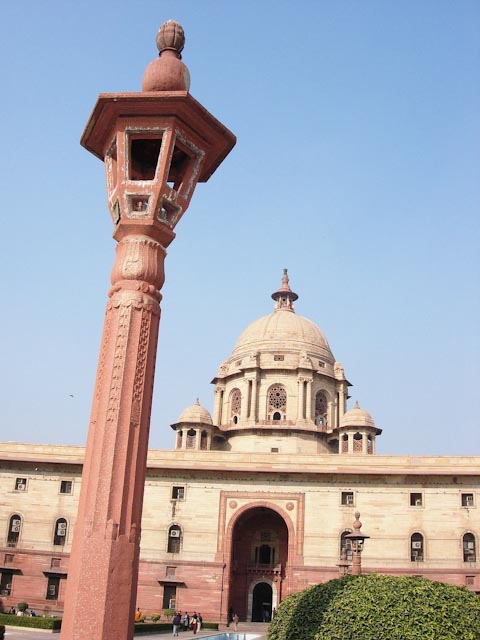
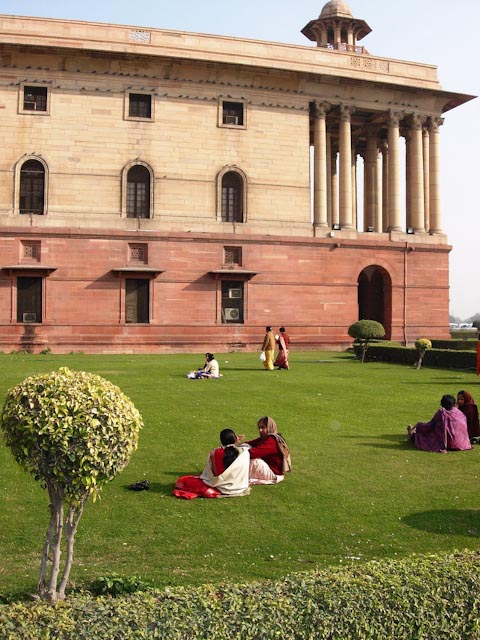
From Raisina Hill where these buildings are situated, you theoretically have a splendid view down Rajpath to India Gate, though the smog means you have to rely largely on your imagination, unfortunately.
Rajpath is also the setting for India’s Republic Day parade, which is on Australia Day, as it happens (26 January). I will just miss the festivities, although with the crowds it will generate, perhaps I should be grateful. Maybe when Kruddy (Kevin Rudd, the recently elected Prime Minister, for my non-Australian readers) gets around to a referendum that’s not rigged, we may share Republic Days, even.

Comments
Total Comments : ( ) You have to register to post a comment.
RECENT COMMENTS